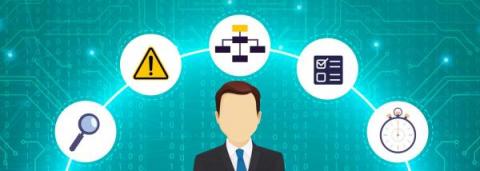Security | Threat Detection | Cyberattacks | DevSecOps | Compliance
Logging
Coffee Talk with SURGe: 2022-AUG-10 Live from Black Hat:
Using Threat Intelligence To Advance Your Security Posture
People often ask me, “What’s the purpose of cybersecurity?” I tell them that it serves to protect the valuable, intangible data assets of firms or private individuals, usually by trying to shrink the attack surface. One way to achieve cybersecurity is to utilize threat intelligence research in your firm’s security plan. In this article, I will discuss the benefits of understanding and implementing a threat intelligence program.
Graylog Security Anomaly Detection: Metrics Ease the Workload
Cyberattacks in 2022: Beware These 5 Attack Types
Cyberattacks are constantly changing. That you know. But how are they changing? And which types of threats are the most prominent today? Those are the real questions you need to answer to stay ahead of modern security risks. Keep reading for a primer on the most prevalent types of cyber security threats in 2022, along with insights on how to build a defense strategy against them. (For a comprehensive view, check out our cybersecurity threats explainer.)
Splunk Announces Participation in the Open Cybersecurity Schema Framework (OCSF) Project
There’s a myth from antiquity known as the Tower of Babel, where people were working together to build a tower to the heavens, only to lose the ability to communicate with one another via divine intervention. Essentially, the groups began speaking their own languages and were unable to complete the tower. So, why are we talking about myths in a cybersecurity blog?
The Democratization of Data: The Pros & Cons of All That Data
Try going one day without navigating today’s data landscape — accepting or declining cookie pop-ups, determining whether and how a company can use your information, and all the data you’re generating simply by browsing the web. Yes, we live in the Data Age. We know we generate mind-boggling amounts of data. The data we generate in a single day is an unfathomable amount (2.5 quintillion bytes if you can do that math). More formally, we say that data has been democratized.
Automated incident response using Log360
Security teams are often overwhelmed with alerts daily, including false positives, and actions that require attention but might be placed on the back burner. But when alerts start stacking up and aren’t addressed promptly, important security concerns might go unnoticed and these can spiral into a data breach. The time to detect and respond to security incidents should be as short as possible to limit the time an attacker can carry out an attack.
Introducing Devo Connect, Your New Online Community
For many people, cybersecurity is merely a necessary business function. But that’s not how our customers see it. For you, cybersecurity is an ever-escalating arms race involving sophisticated operators and uncounted moving parts where a single mistake can cause an avalanche of problems. Cybersecurity isn’t just your job, it’s your life. You are on the front lines, responsible for protecting your organization in a high-pressure environment every day.
Security Made Stronger with Splunk User Behavior Analytics (UBA) Version 5.1
The Summer of Security continues! Hot on the heels of security announcements at.conf22 and a brand new Splunk Security Essentials 3.6.0, we’re excited to announce the availability of User Behavior Analytics (UBA) version 5.1.











